Once you leave Narshe, the overworld is basically walled off to give you a small amount of territory to explore, but not so much that you’ll get lost. Between Narshe, the Chocobo Stables, the blocked cave, and a castle standing in the desert to the south, you can only travel to four destinations.
Everything but the castle is just a distraction, though. You can’t move the game forward until you visit Figaro Castle. You can dawdle and grind for levels in the overworld all you want, but fairly soon your character growth will hit the wall at which even fighting those relatively valuable desert creatures will yield so little experience that you can’t gain new levels in any reasonable amount of time.
The castle stands as the sole geographic feature in the desert, so it’s fairly hard to miss. You can see if even if you stick to the grasslands and their relatively weak enemies.
The gatekeeper lets you in; evidently Locke visits Figaro often enough to be recognized on sight..
Once you enter the castle, you need to see the king. You can’t really stray from the path to the throne room yet, because once again the map is designed in such a way as to railroad you. Guards are stationed at most doors to turn you away, and the one side path that appears to be open leads to the engine room, and the castle’s chief engineer scurries over to stand in your path if you try to snoop.
It’s natural to be curious, though. What on earth does a castle need with an engine room?
Gadgetry is the prevailing theme in Figaro, though. The one side excursion you can make before seeing the king is to duck into a pair of rooms where shopkeepers dwell. The first simply offers consumables that you either have already seen in battle (Potions and Antidotes) or goods that strain your budget (Phoenix Downs and Tents).
The other shop, however, is much more interesting. A stocky bearded gentleman is selling some impressive-sounding device…
…the Auto Crossbow, Noiseblaster, and Bioblaster. The precise utility of and need for these devices isn’t quite clear yet.
Honestly, the placement of this particular shop here seems slightly ill-considered. One of these devices will be added to your inventory in short order, and because this is your first view of an equipment shop interface, you may not be aware of one of the helpful mechanics FFVI introduces (unless you were paying very closely attention during the tutorial room).
Each party member appears in the lower pane of the shopping window, and when you select equipment that character can use — weapons, armor, accessories — their sprite animates and you see a small icon to indicate whether that new item represents an increase or decrease in their core stats. Since you haven’t bought gear for your party at the point in the game, it may not be immediately intuitive that neither Terra nor Locke have any use for these tools.
Aside from the shops and some obstructive guards, there’s nothing else you can do in Figaro yet except meet its monarch, the regal…
…Edgar. His icon looks remarkably like the official artwork of Faris from Final Fantasy V. But rest assured that he is in fact a man rather than a woman in disguise, a fact he makes abundantly clear throughout the game.
Also, his full name is Edgar Roni Figaro. But you can call him Lando if you like.
Edgar and Locke discuss the story a bit and make it clear that while this particular kingdom has a treaty with the Gestahlian Empire, Edgar has no particular love for their allies. They dearly want Terra to join up with them, if only to deny the Empire her skills, but rather than pressuring her to agree they leave her to take the time to explore the castle and talk to people about Figaro.
Of course, you ultimately have no choice but to team up with Edgar — this isn’t Elder Scrolls — so the free-roaming time amounts to an opportunity for the game to provide more backstory and context.
You can also take a rest for free to restore Terra’s HP and MP totals.
The most interesting nugget of narrative plays out if you visit the High Priestess.
She kicks off a flashback where a younger Edgar and his brother discuss succession in the very likely event their ailing father passes.
Edgar’s brother is named Sabin (Sabin Rene Figaro, to be precise), and… I can’t come up with a punchy Star Wars-themed moniker for him. Sorry. He’s a powerful monk who doesn’t want to play by the rules, so let’s dig into the prequels and call him Qui-Gonn. Anyway, his original name from the Japanese version is always listed as “Mash,” which I thought was remarkably inconsistent with the more common Western names prevalent throughout the game until I realized it was actually meant to be “Matthew.” Romanization, folks.
Sabin and Edgar’s flashback shows them flipping a coin to see who will take up the succession; we don’t see the outcome, but we do see Edgar hanging out as king sitting next to an empty throne, so clearly Sabin split for parts unknown. At this point, the presence of the name entry screen should make it clear that Sabin will have a part to play in the game.
Otherwise, what you learn here simply sets up details about the world: The Empire is not the only power, and Figaro has a place in the global economy.
And no one seems to have seen magic in person, which makes Terra’s combat capabilities all the more intriguing.
And there’s also this bozo, who seems incidental at this junction but plays a minor role much, much further down the road.
Anyway, Terra is allowed to roam freely now, but only within the limitations of the existing game world. The cave to the east of Figaro remains blocked by a guard, and the plot won’t advance until you talk to Edgar again. On the plus side, even though the game is railroading you and Terra both, it’s being very nice about it.
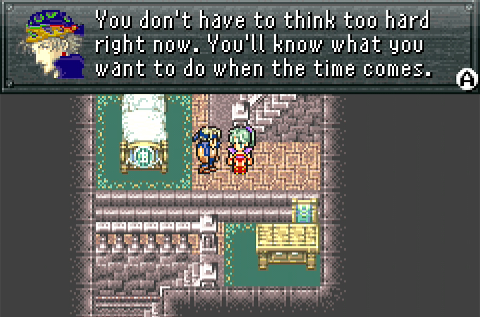
Edgar may be king, but he doesn’t take anything by force. This is reinforced by his reputation as a shameless womanizer who throws himself at every woman in the kingdom, young and old alike. It’s actually kind of gross if you pay attention to the actual breadth of women who talk about his romantic attentions.
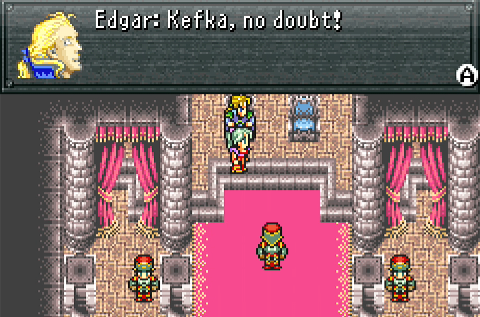
Once you speak to Edgar, the gears of plot begin to grind in motion as the kingdom receives a visitor: A guy named Kefka.
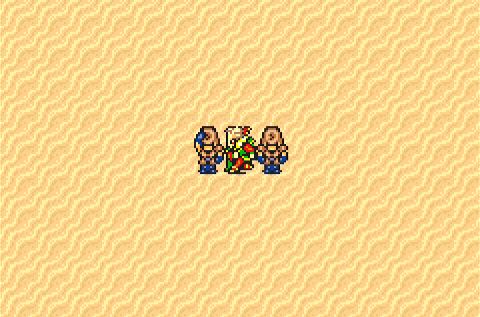
Who should look familiar. We’ve already seen Kefka a few times already: As a tiny, tiny cameo in the game’s introduction, standing with the Empire’s other generals in Terra’s flashback, and — most importantly — goading Terra into burning everything in sight and murder his army’s soldiers. He is an over-the-top monster with no remorse or redeeming features, though he also looks and dresses like a clown. So it’s a little hard to know what to make of the guy.
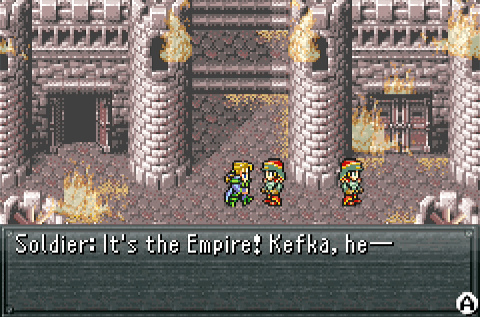
Though, when he sets fire to Figaro, it becomes easier to make up your mind.
At this point, the game gives you temporary control of Edgar — though your options are even more limited here than we’ve seen in other situations where the game needs to drive the plot forward. You can talk to your soldiers, Kefka’s soldiers, or Kefka. Speaking to the castle’s chancellor toward the back will continue the plot’s momentum: Figaro Castle submerges beneath the sand (hence the need for an engine room), while Edgar, Terra, and Locke leap onto chocobos and race to freedom.
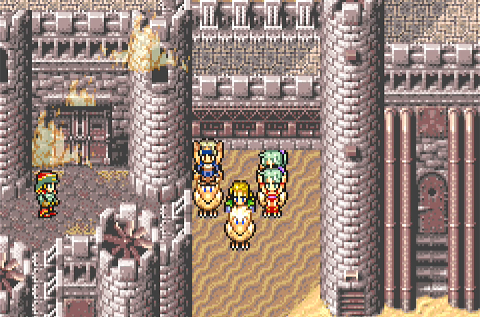
Not bad for a perverted sex fiend.
This little scene is really unusual for an RPG of this era: It’s a dramatic action that involves quite a bit of movement and even changing scenery. You definitely didn’t see this sort of thing in PC and cart-based console RPGs, and disc-based RPGs like those on Sega CD or Turbo CD used animated cut-scenes to convey this sort of action. There’s a lot happening here, and FFVI really goes out of its way to keep the pace lively. The trade-off for this, as we’ve seen, is an unusual degree of limitations and linearity. Nearly an hour into FFVI, and there’s been exceedingly little freedom. This definitely puts FFVI at odds with the normal sensibilities of the genre. Not necessarily a bad thing… more the shape of things to come for a huge percentage of the genre.
Let’s break down the game so far: After the opening dialogue and credit role to set the stage and mood, you controlled a girl and two soldiers through a series of escalating battles with fixed locations and enemy parties. Soon, your team is demolished and you’re left with just the woman, Terra, minus her soldier pals and her snazzy suit of mech armor. As Terra, you can only travel through a short, linear cave, but now the battles are random in nature. The scene changes to Locke, a thief, who teams up with a gaggle of moogles to defend Terra while teaching you about the game’s (uncommon but nevertheless essential) party-swap mechanic, stealthily introducing a future party member (Mog) and the opportunity to try out both characters’ unique skills (Steal and Dance).
At this point, you’re ushered out of the city you invaded and finally get a chance to experience a proper tutorial — if you want. Otherwise, you enter the game world proper and experience the overworld’s workings, such as random battles that change as moving through scenery leads you through different environments. You can also rent a chocobo before reaching the game’s first proper “town,” Figaro Castle, where you learn more about the world, team up with a new character (Edgar), and have a proper meeting with the villain of the piece (Kefka).
That’s a huge amount of story and gameplay information to absorb in the space of an hour, but FFVI does an excellent job of doling it out in small, easy-to-digest pieces. For veteran RPG and Final Fantasy fans, this sequence offers a breezy chance to enjoy some flashy storytelling; for newcomers, though, the flashiness puts an accessible face to a traditionally complex and arcane genre. Meanwhile, the low difficulty and gated design of the world prevent the inexperienced from wandering off course and dying unexpectedly, minimizing frustration. While you can argue FFVI takes a little too long to open up its design to players, this prologue perfectly demonstrates how to introduce players to a world, its characters, and its game mechanics, setting up story and play hooks for the rest of the adventure, without forcing didactic tutorials into the mix. There are a lot of reasons some people consider FFVI the greatest RPG ever, and in many cases it’s because it served as their entry point to the genre. The excellent design of opening hour pulled them in.
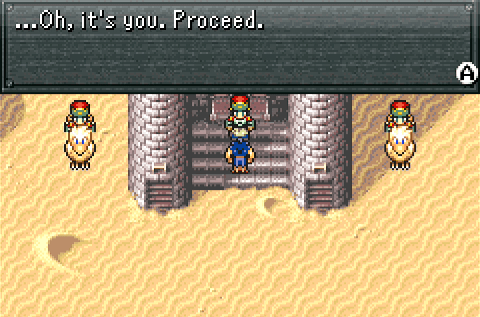
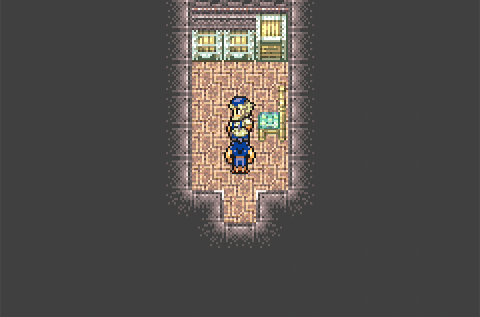
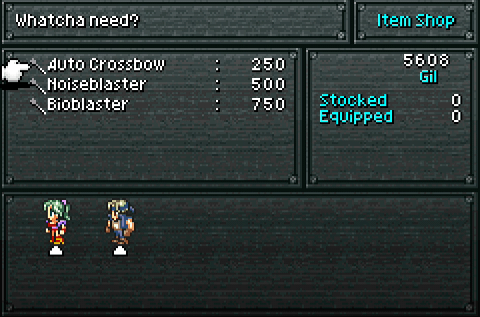
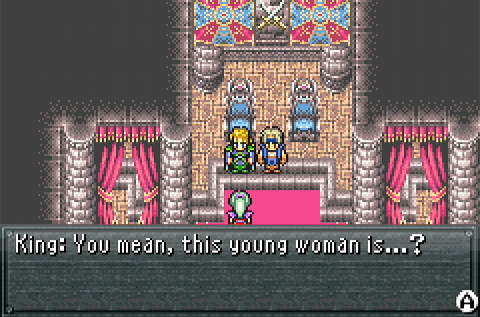
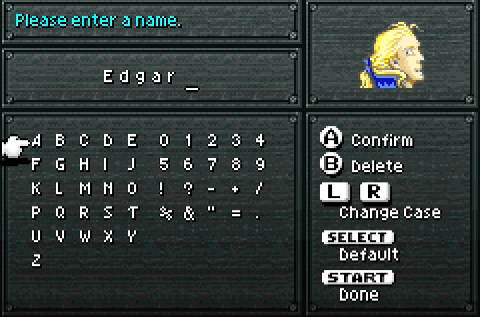
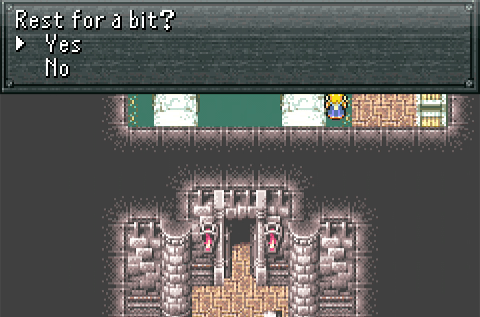
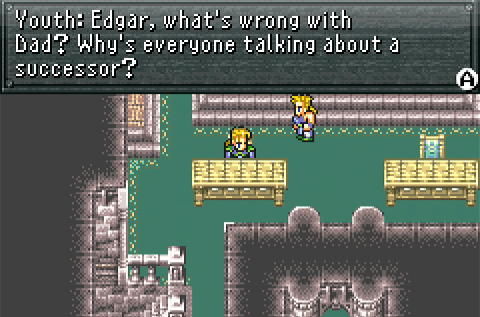
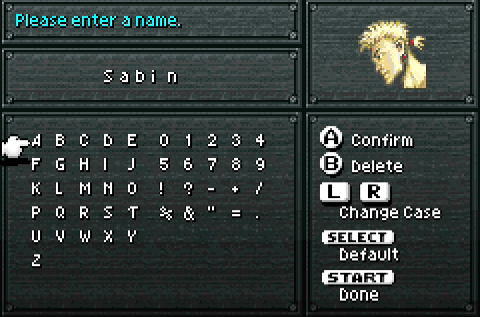
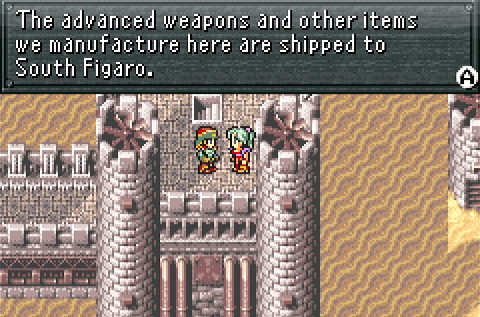
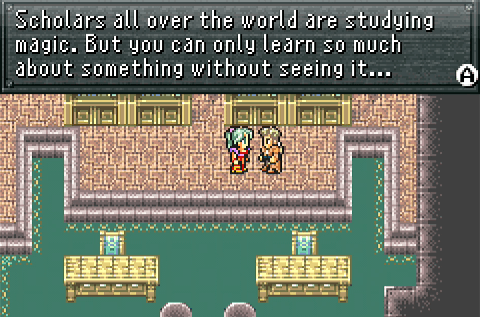
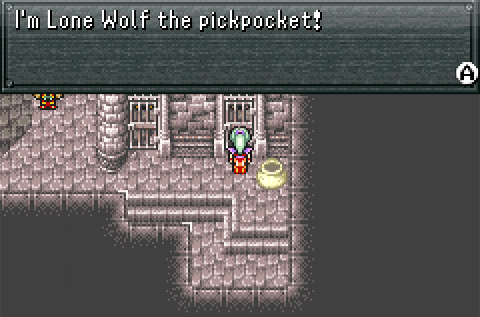
Though it wouldn’t see release until a few years after VI, Lone Wolf is one of at least two character cameos from Final Fantasy V. Anyone who released him in V and missed out on a few treasures later on because of it will know he’s up to no good in VI (even though you can’t free him yourself), and for reasons that will be obvious later on in the anatomy, it works the other way, too.
“Though it wouldn’t see a US release”
Forgot that part. ^^;
It always annoyed me when any RPG made after FFVI didn’t have the usage/stat-change indicator for every character while purchasing items in the shops. (Ahem, Final Fantasy Tactics Advance.)
I’m playing along with the Anatomy and enjoying things, though I’ll be saving the bulk of my play-through for a number of trips coming up for holiday performances where the handheld machines can come along and the consoles can’t.
In the mean time, I’ve started on the HD remaster of FFX…
“Nearly an hour into FFVI, and there’s been exceedingly little freedom. This definitely puts FFVI at odds with the normal sensibilities of the genre. Not necessarily a bad thing… more the shape of things to come for a huge percentage of the genre.”
This really strikes me. I felt as if, despite the railroading going on, FFVI gives me lots of opportunities to play the game. Lots of little combats, lots of freedom to wander around town (despite guards and blockages and such). FFX, on the other hand, is making no such concessions and holding up no pretense…I’m six hours in and feel like my job has been, for the most part, getting Tidus to the next clicky-spot so I can watch people talk some more. I really enjoy the FFX combat system, but I feel they’ve given me little chance at all to experience it. It’s been a decade or more since I’ve played the game, so I don’t remember if it opens up at all, but I sure hope so. I played for about an hour and a half tonight around the end of Kilika and the beginning of Luca and did nothing but wander from scripted scene to scripted scene…
I feel I’ve had much more “play” in the first 2 hours of FFVI than in the first 6 of FFX. I definitely see the progression to the corridors of FFXIII. Interesting that FFXII escaped that trap in such a big way. I sure do miss that style of game.
The flipside of FFVI’s early linearity is that it eventually opens up more than most previous games in the series.
You keep doing this. Do you blurt out the ending of movies, too?
You got me, I jumped way too far ahead there. But in my defense, the coin flip you mentioned also isn’t shown until several hours later in the game.
The poster that comes with the game spoils the second half too.
I’m not convinced that FFVI was substantially more linear than other 16-bit Final Fantasies up to that point. It does take longer to reach proper towns and dungeons than FFIV and FFV, but those predecessors are also rife with “plot walls” such as guards who deny admittance.
Of course, the real benefit of being able to buy multiple Auto-Crossbows is made apparent in the original Japanese release where you could equip them on your head for immense stat bonuses.
Haha, I hadn’t heard about that particular bug.
It might take an hour to play that much so far, but I’m pretty sure that I could blaze through all that you’ve covered in less than 20 minutes. Of course, that would be if I read stuff real fast (I do), ignored the training house and didn’t wander around looking for chocobo forests.
This isn’t about speed-running for experienced players — it’s about how the game presents itself for a first-time player. Presumably, such a person will wander around and explore.